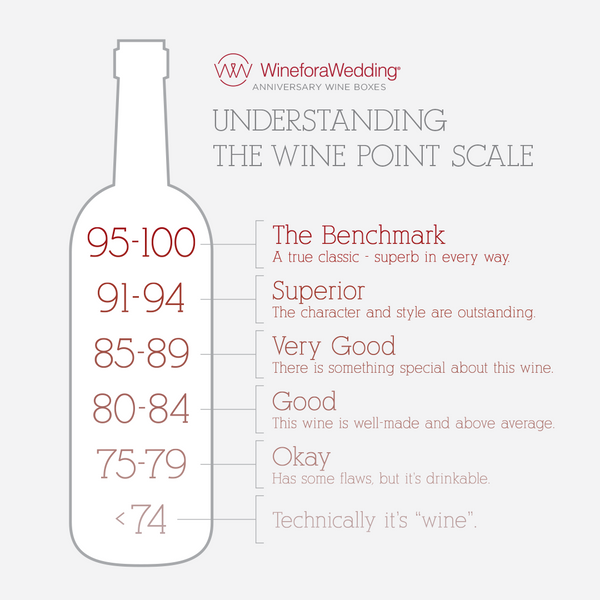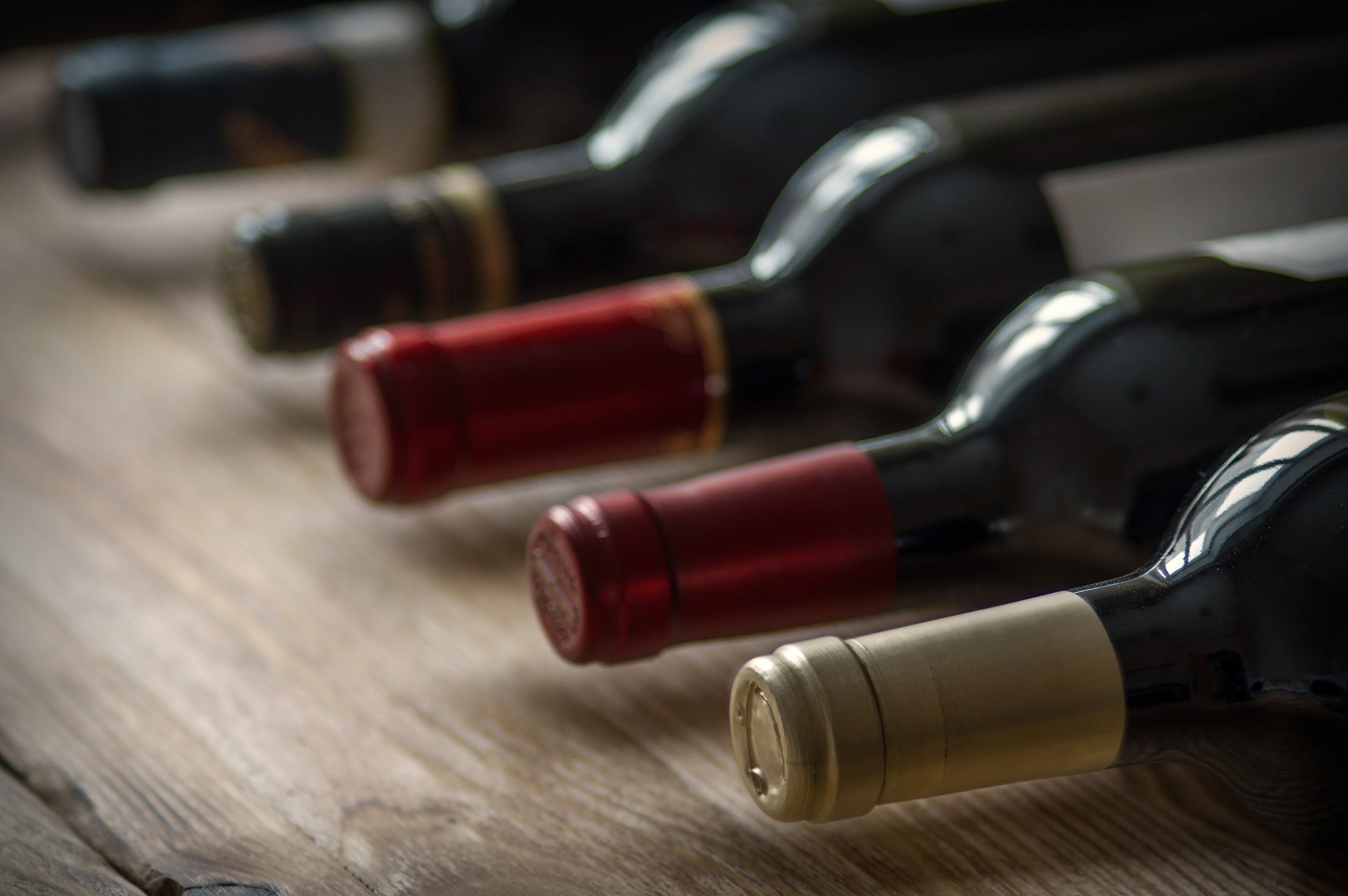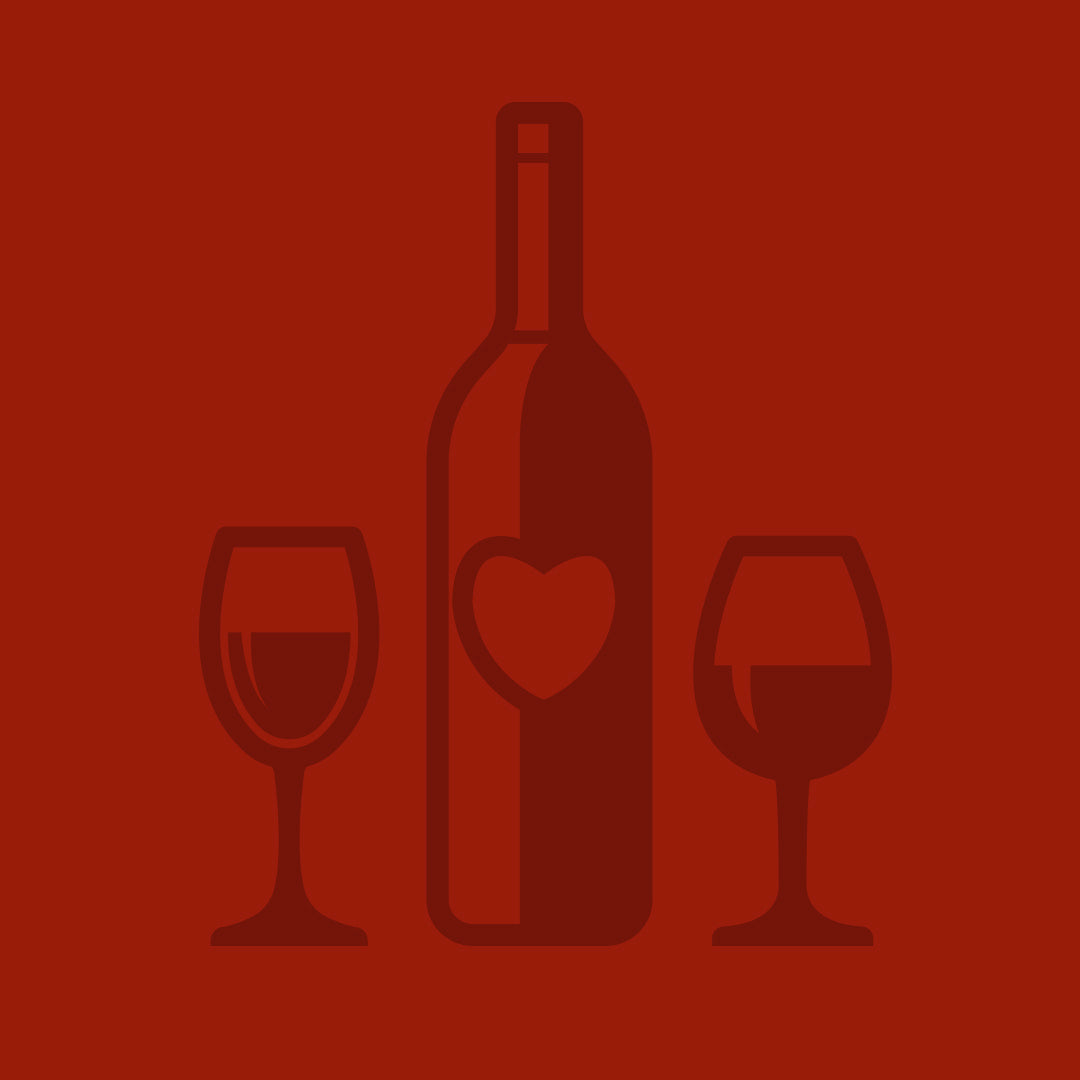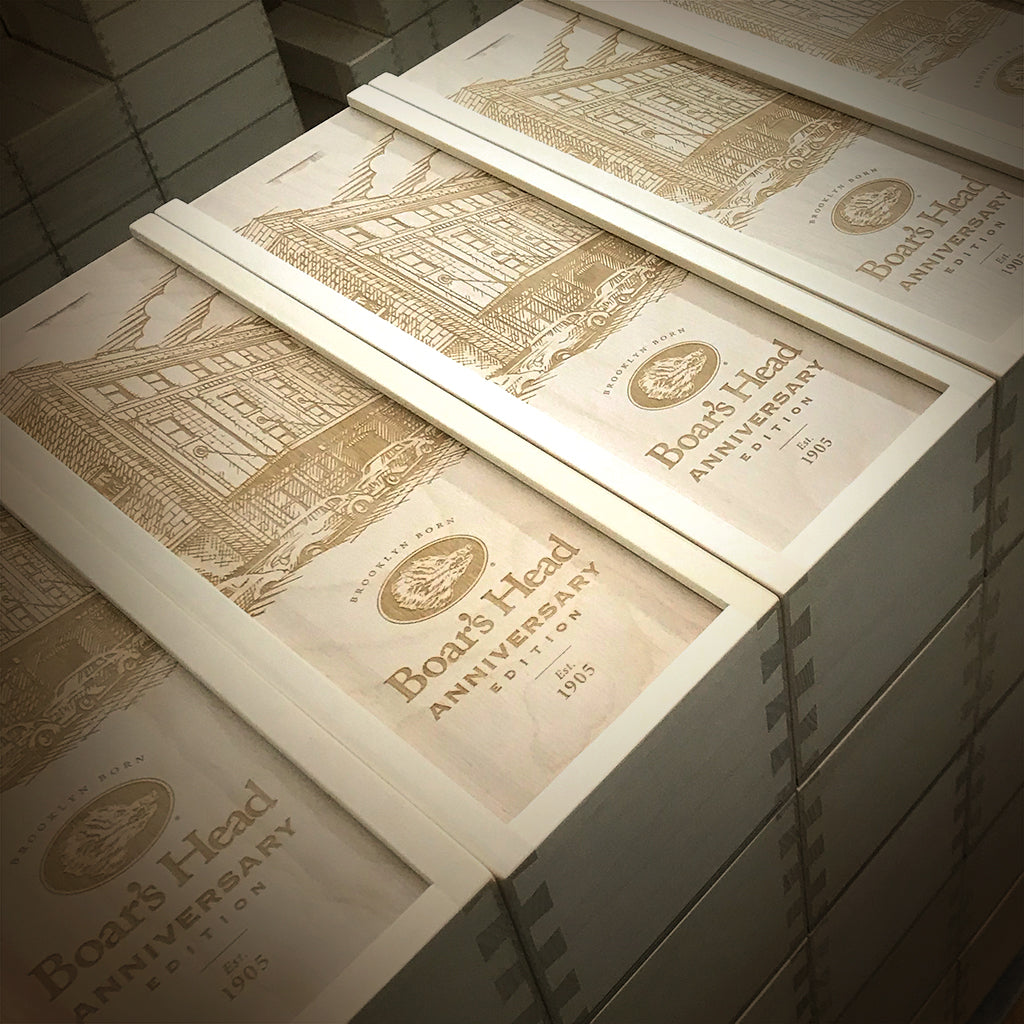
So you are purchasing a bottle of wine to give as a gift for some friends. You walk down the wine aisle and see hundreds of options. How do you choose? Pick one with a fancy label? A fun name? Those are a few ways to make your selection, but you really want to make sure they will enjoy the wine and see you as an aficionado. That is when you notice something. Some of the wines have a score: a Merlot rated 83 points, a Cabernet rated at 92 points, a Syrah rated at 95 points. It is easy to decipher the higher the score the better, but how did they get the rating and what does it really mean?
For starters, let's talk about how the wines are scored. The infographic below explains how the ratings are achieved. The first 50 points are awarded just because it is wine. The judge then scores the wine, adding points for appearance, aroma, flavor and then up to 10 more for their overall experience. The scale goes up to 100 points. The judge must take into account the type of wine as well. Now will two judges give a wine the same rating? Probably not, so it is really more of a suggestion than something set in stone.

Now that we know how the wines are scored, what do these point ratings mean? The second infographic gives a good indication of what you can expect based on the wines rating. It also explains why you will never see a rating of 70 points advertised on a wine. If a wine isn't rated does that make it bad? Not necessarily. As not all wines get rated, but it could mean it did not get a flattering review.

So in the end, what does this all mean? If you are picking wine for yourself, experiment and learn what you like. We are not all aficionados and the wine is going to taste different to each of us. An 80 point wine might be 100 in your book. But if you are picking wine as a gift, why take a risk? Go with something the experts give high marks to, and remember not all highly rated wines are expensive.
Interested in learning more? Here are some other great resources:
Inc. - Making Sense of the 100 Point Wine Scale by Jim Schleckser
Wine Spectator
Wine Folly - A Pragmatic Approach to Using Wine Ratings










